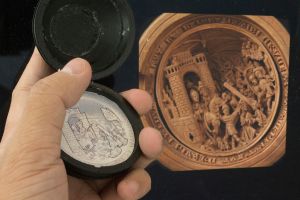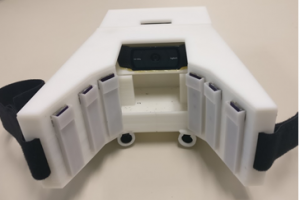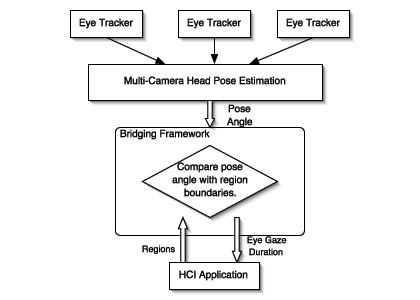|
Data visualization tool to identify stressful factors for cyclist to help city planners make better decisions on cycling infrastructure in Atlanta |
In our project, we are exploring how to design an AR tool to provide an immersive experience for high school students as they learn about a trigonometric concept called the unit circle. |
We present three prototypes designed for a hypothetical museum exhibit that elicit historical and experiential qualities of early 16th-century prayer-nuts. As personal religious experiences included a “dependence of spirituality on material objects” during the 16th-century, we believe that digitally-enhanced multisensory interactions can help situate the artifact in its historical context. The 3D printed interactive prayer nuts augmented with audio-visual effects support the visual voyage, experience of spirituality, and scents of power.  |
This demo shows a system called Dust and Magnet (DnM) that is a general purpose data visualization system. DnM represents data items as iron dust. Each attribute of the data then is a magnet. The system is implemented on a large multi-touch display where the analyst can deploy magnets and drag them around the view. Data points will then be attracted more strongly or weakly depending on that data item's value of the attribute represented by each magnet. This system provides a very hands-on, visceral data exploration experience. |
|
Biological systems in general are multifunctional and environmentally sustainable. Thus, biologically inspired design is posited as leading to multifunctional and environmentally sustainable designs. Design in general is characterized as a problem-driven process. However, biologically inspired design also entails the twin process of solution-based design. Previous work has postulated that the solution-based design process is prone to design fixation but leads to more multi-functional designs. Design Study Library (DSL) is a digital library of eighty-three cases of biologically inspired design. Website: |
The motion of our articulators is responsible for generating speech. To re-learn how to speak intelligibly after a brain injury, practicing enunciation when learning a new language, or change our native accent to fit in a new place or required as part of our job, accessing and correcting our articulators' motion is crucial. Few practical solutions exist in the market, and our system is filling this gap by providing an affordable, unobtrusive, portable and user-friendly solution to visualize and generate feedback to the user about their speech performance (e.g., tongue and lips gesture).  |
Mumerize is an educative music game to help music learners to memorize music intervals and learn the structure of music. This game provides the player with a scene like a platform game where the platforms are created by dividing a melody into music notes. The player should determine the position of the next platform by hearing and selecting an answer of intervals. |
A team of music technology students developed a system to enable novices to create remixes of any 4 Spotify songs they want. The system uses source separation to break down the songs into different components, such as vocals, drums, bass. Users can then generate 32 bar compositions that randomize how the song is constructed. The goal is to better understand users' preferences for control vs. automation of their mashups. |
|
The Mwangaza Project is a collaboration among the Sonification Lab, inAble, and Kenyatta University to develop and deploy accessible STEM educational resources to schools for the blind throughout Kenya. Projects that we are working on include accessible weather and climate education, math software for accessing graphing and number lines, and renewable energy as a component of STEM education and support for educational technologies.  |
My:TalkiesLab: My: Talkies is a tangible learning kit for teaching wireless communication through expressive making with middle school students. It enables the exploration of form and function together. |
||
|
Equipping students with disabilities with the right accommodation helps them experience greater independence and self-esteem, which set them up for success. However, at present, many barriers inhibit these students from obtaining the right accommodation. This project seeks to explore these barriers, and to build a platform that helps students with disabilities overcome them, by providing them easy access to assistive technology and a chance to interact with peers and experts, thus building a supportive community around them. |
In many Chinese families, adolescent children are moving abroad to pursue higher education. Due to cultural issues and China's One-Child Policy, parents have high expectations for their children and are willing to invest time and money to help them build a successful future. In this study, we interviewed both Chinese students in the US and Chinese parents in China whose children are studying abroad about their family communications. Parents and students used a variety of media, and families negotiated how each medium was used.  |
Our findings indicate that "contrary to assumptions of smooth, steady development over the next several years" Shenzhen will enter a "tightrope era" of pronounced uncertainty as it seeks to transition from one model of growth to another. The city's indigenous innovation and its economic well-being will be tested as Shenzhen weathers the most significant headwinds it has faced in its brief, four-decade-long history. |



